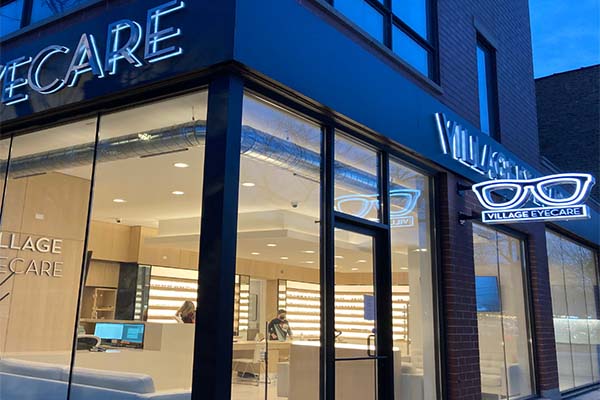Cardiologist Andalusia: Holistic Approach to Heart and Eye Wellness
Recognizing the Different Vision Improvement Procedures Available for Clearer Sight
In the world of vision modification treatments, a wide range of alternatives exist to deal with refractive errors and give individuals with clearer view. Allow's explore the intricacies of these treatments and dropped light on the path to attaining enhanced vision quality (Eye Center Andalusia).
LASIK Surgical Treatment
LASIK surgical procedure is an usual refractive treatment used to correct vision troubles such as astigmatism, farsightedness, and nearsightedness. This medical strategy, which stands for Laser-Assisted in Situ Keratomileusis, intends to reshape the cornea to improve how light is concentrated on the retina, ultimately boosting vision clarity. During the treatment, a thin flap is developed on the cornea, and a laser is used to remove accurate amounts of cells to improve it appropriately. This reshaping enables light to be precisely focused onto the retina, fixing refractive mistakes.
Among the main benefits of LASIK surgical procedure is the quick renovation in vision experienced by people. Several people discover a significant enhancement in their vision quickly after the procedure. Additionally, most people report marginal discomfort and discomfort during the surgery and recuperation period. The recovery time for LASIK is relatively quick, with many people returning to their everyday tasks within a day or more post-operation. Generally, LASIK surgery is a preferred selection for people looking for a long-term solution for their vision problems.
PRK Procedure

PRK is an ideal option for individuals with thin corneas or those at a greater threat of eye injuries, as it does not entail creating a corneal flap. The recuperation process for PRK is slightly longer contrasted to LASIK, as the epithelium requires time to restore. People may experience discomfort and blurry vision for a few days complying with the treatment.
Despite the longer recuperation time, PRK can yield outstanding lead to vision improvement, making it a valuable option for those who may not appropriate candidates for LASIK surgical procedure. - Neurologist Andalusia
Implantable Lenses
In comparison to PRK where the cornea is reshaped directly, implantable lenses use another method for remedying vision by putting man-made lenses inside the eye. This treatment is particularly helpful for people with high levels of farsightedness, nearsightedness, or astigmatism who might not appropriate candidates for laser surgical procedures like LASIK or PRK.
Implantable lenses, additionally known as phakic intraocular lenses, job by supplementing the eye's all-natural lens with a man-made one. These lenses can be put before the natural lens (former chamber) or behind the iris and in front of the all-natural lens (posterior chamber) By readjusting the power and positioning of these lenses, ophthalmologists can effectively remedy refractive mistakes and boost aesthetic skill.
One advantage of implantable lenses is that they are detachable and exchangeable, giving versatility for future modifications. As with any medical treatment, there are threats involved, such as infection or cataract formation. Individuals considering implantable lenses should consult with an eye care specialist to establish one of the most ideal option based upon their private demands and eye health and wellness.
Corneal Rings

The treatment for placing corneal rings is minimally intrusive and fairly quick, frequently carried out as an outpatient procedure. Throughout the surgical procedure, the ophthalmologist makes a little cut in the cornea and inserts the rings at a specific deepness. When in position, the rings help to reshape the cornea, offering a smoother surface area for light to enter the eye, which can result in clearer vision.
Corneal rings are thought about a reversible treatment, as they can be gotten rid of or replaced if required. While they may not entirely remove the need for glasses or get in touch with lenses, corneal rings can substantially enhance vision top quality and overall visual convenience for people with keratoconus or various other corneal irregularities.
Refractive Lens Exchange
Adhering to the modification of corneal irregularities with procedures like corneal rings, another vision adjustment technique that can resolve refractive mistakes is Refractive Lens Exchange (RLE) RLE is a surgery that entails replacing the eye's natural lens with a synthetic intraocular lens (IOL) to deal with refractive mistakes such as farsightedness, nearsightedness, and presbyopia. This treatment is especially useful for individuals that might not be appropriate candidates for treatments like LASIK or PRK because of variables such as slim corneas or high refractive errors.
RLE belongs to cataract surgery, as both include eliminating the eye's natural lens; however, in RLE, the lens is clear, not cloudy as in cataracts. The man-made lens implanted throughout RLE can be tailored to resolve the person's particular refractive mistake, click this link supplying clear vision at different distances. Recovery time for RLE is reasonably quick, and individuals can expect better vision right after the treatment. As with any medical procedure, possible threats and complications exist, so a detailed examination with an eye care professional is necessary to see this site establish if RLE is the ideal vision correction option.
Final Thought

In the world of vision modification treatments, a multitude of alternatives exist to attend to refractive errors and provide individuals with more clear view.LASIK surgical treatment is a common refractive treatment utilized to fix vision issues such as farsightedness, nearsightedness, and astigmatism.While additionally a typical refractive procedure, the PRK (Photorefractive Keratectomy) strategy differs from LASIK surgical procedure in its strategy to remedying vision troubles.Complying with the adjustment of corneal irregularities with procedures like corneal rings, an additional vision improvement strategy that can attend to refractive errors is Refractive Lens Exchange (RLE) LASIK surgery, PRK procedure, implantable lenses, corneal rings, and refractive lens exchange are all alternatives that can resolve various vision Full Report issues.